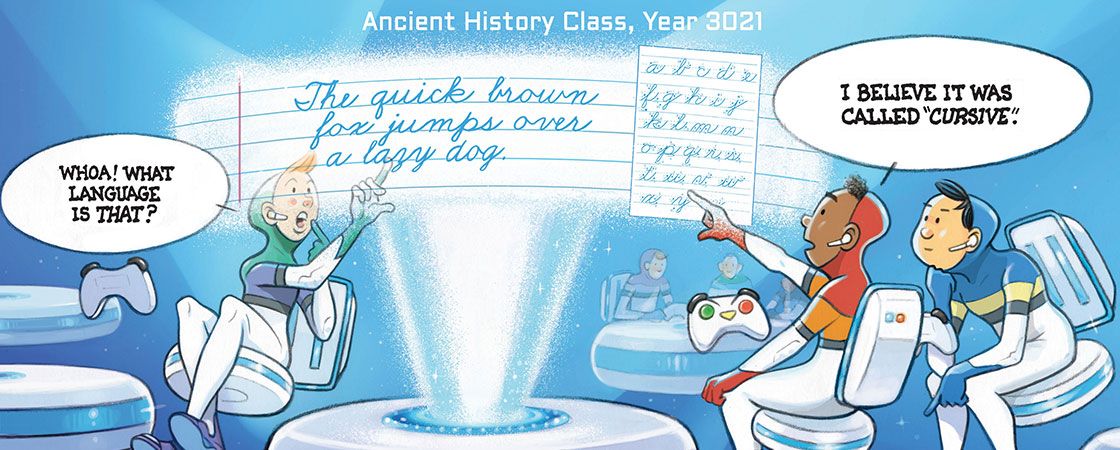You love writing in cursive, right? Your pen flies across the page, creating words so beautiful you want to frame them. Wait, what did you say? Your cursive looks like the furious scribbles of a 2-year-old?
Don’t worry. Today, many people believe cursive is a relic of the past and that the ability to use it is way down on the list of what’s important.
For many years, writing in cursive was considered one of the most valuable skills taught in school. Students spent months perfecting tricky q’s and strange-looking z’s. In fact, kids were graded on penmanship the way you are graded in math. Then, about a decade ago, cursive started to vanish.
Recently, cursive has made a bit of a comeback; 21 states currently require schools to teach it. Still, in most states, kids learn to sign their names and not much else. That has raised a debate: Should cursive be taught at school?

